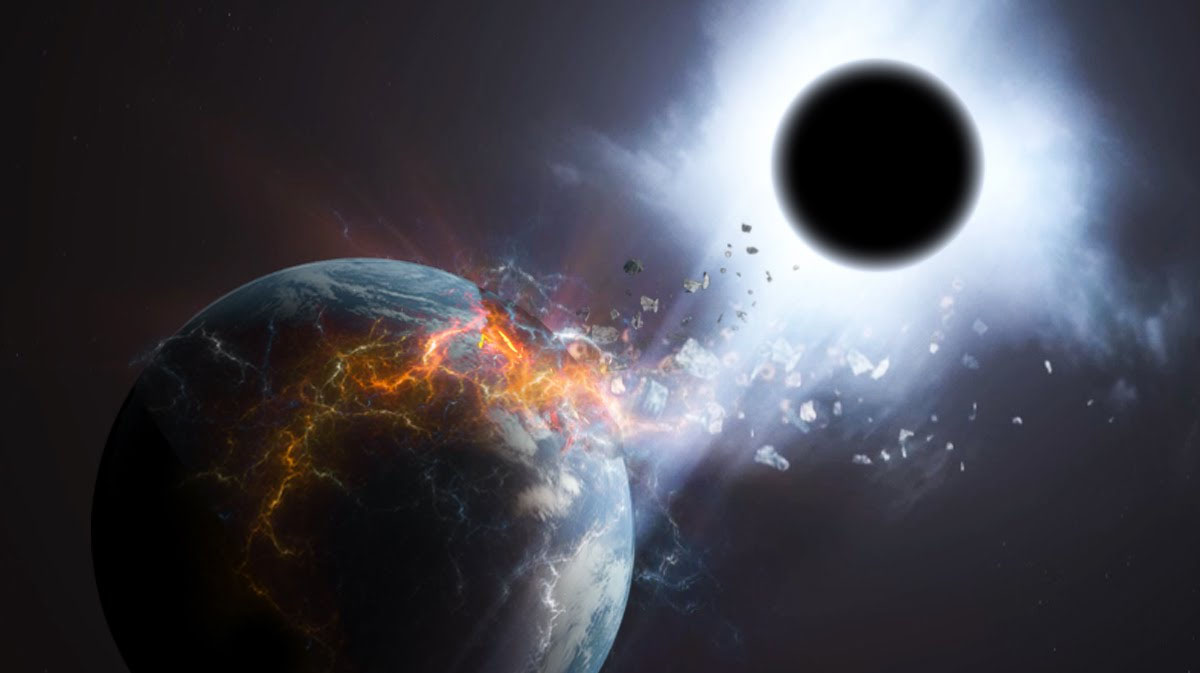getting information from a black hole’s maw

Physicists are loath to break the laws by which the universe works when putting together their equations. They don’t fear a trip to physics jail or anything like that, but if their work requires a massive rearrangement of what we seem to understand, they tend to take it as a sign that somewhere along the way, they made an error. And then, nature decides to throw them a curveball in the form of black holes, a real life collapse of the laws we’ve come to understand contained in objects that can be as small as a city and have the gravitational pull of a ten to 6.4 billion times that of our Sun and inside them, matter exists in such a hyper-dense and chaotic state that what we know about entropy is stretched to its extremes and beyond. It’s as if black holes decided to show physicists an obscene gesture as they hide in the darkness of the cosmos, feeding on nearby stars, gas and maybe a planemo passing a little too close to their ever-gaping gravitational maws every once in a while.
Everything about these objects is extreme. A sample of black hole energy the size of a bacterium could weigh about the same as an average asteroid (depending on the parent object’s overall mass) and densities at the center of the swirling maelstroms are estimated to be close to 5.1 × 10⁹³ tons per cubic meter, also known as the Planck density, the densest anything can theoretically get. And even more extreme and disconcerting to scientists, is the fact that anything they attract vanishes without a trace, seemingly violating the conservation of matter and energy. Matter and energy are supposed to be indestructible in a closed system and yet, here they are, disappearing before our very eyes.
This is what lead some physicists to propose that black holes were a gateway of some sort and somewhere in space were their polar opposites, white holes, belching out all that the black holes swallowed. Alternative ideas also included that the singularity of the black hole actually was a branch into a nascent universe since Planck density approaches what we think should’ve been the density of our universe an infinitesimal fraction of a second after the Big Bang.
Of course the problem with these ideas is their lack of practical falsification. They make predictions that really can’t be backed up by observations and experiments. And this is where Hawking radiation came into play. It’s primary function is to explain what happens to the black hole over its lifetime and allows us to understand that it’s just like any object in the known universe in a sense that it has a finite lifetime, it radiates heat (less than a negligible fraction of a watt per solar mass) and it eventually dies by the laws of entropy. But until we can find cosmic sources of this exotic radiation, scientists can still find problems with the current models of black hole dynamics.
This is where a recent paper by renowned physicist Gerard ‘t Hooft tackled the issue of information about the objects falling into a black hole and how it affects the laws of physics on the smallest scales. As he worked out, to keep the law of causality we all know and love, we’d need to do away with the concepts of event horizons and black holes as we know them. The quantum effects in and around them vary too much from the standard Newtonian dynamics which was the foundation of general relativity, creating a gap between physics of the quantum realm and those of the cosmos at large.
Here’s how it works. To keep all the equations describing the behavior of matter the same at every scale you would need to adjust them so events like the singularity of a black hole occur at t = ∞, or in other words, never. Because the singularity never materializes, the event horizon becomes another curvature in space-time and we have an idea of what happens to the matter going into the black hole. The effects we see are break in the usual symmetries of particle behaviors but what exactly causes them and how is something that still needs a lot of work according ‘t Hooft’s conclusion. Ultimately, in his attempt to solve the information paradox, i.e. what happens to the matter and energy swallowed by a black hole and what can we tell about what will happen to it after it sinks into the singularity, t’ Hooft highlighted that we really haven’t defined what the information really is. What is it that we need to know about matter and energy to predict how it will function at any scale with one set of equations? So far, this is a question still awaiting a satisfactorily rigorous answer.
See: Gerard ‘t Hooft (2009). Quantum gravity without space-time singularities or horizons, arXiv: 0909.3426v1





